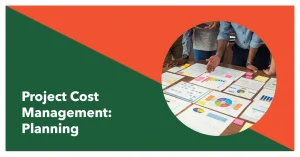Introduction
Effective planning and organization are crucial for achieving project goals and ensuring timely delivery. Among the various tools available to project managers, the Gantt Chart and the Work Breakdown Structure (WBS) stand out as two fundamental instruments that facilitate project planning and execution.
A Gantt Chart is a visual representation that uses bars to illustrate the timeline of project activities, showcasing the start and stop dates for tasks and subtasks. This tool allows project managers to see the sequence of tasks, identify dependencies, and monitor progress in a clear and concise manner [11][13].
On the other hand, a Work Breakdown Structure (WBS) is a hierarchical breakdown of the project scope into smaller, more manageable components. It visually maps out what a project will achieve, helping teams to break down tasks into actionable items while demonstrating the hierarchy and relationships between different project elements [4][8].
The importance of project management tools like Gantt Charts and WBS cannot be overstated. They provide a structured approach to planning, organizing, and tracking project activities, which is essential for maintaining clarity and accountability among team members. By utilizing these tools, project managers can enhance communication, streamline workflows, and ultimately drive project success [7][12].
This post aims to provide a comparative analysis of Gantt Charts and WBS, exploring their unique features, benefits, and ideal use cases. By understanding the strengths and limitations of each tool, project managers and team leads can make informed decisions about which tool to employ for their specific project needs, ensuring a more efficient and successful project management process.
Understanding Gantt Charts
Gantt charts are essential tools in project management that provide a visual representation of a project’s schedule, making them invaluable for project managers and team leads. Here’s a detailed look at their structure, functionalities, and advantages.
Structure of a Gantt Chart
A Gantt chart is organized along two axes:
- Tasks: The vertical axis lists all the tasks or activities involved in the project. Each task is represented by a horizontal bar that spans the duration of the task.
- Timelines: The horizontal axis represents the timeline of the project, typically divided into days, weeks, or months. This allows for a clear view of when each task is scheduled to start and finish.
Additionally, Gantt charts illustrate dependencies between tasks, showing how the completion of one task may affect the start of another. This feature is crucial for understanding the sequence of activities and managing interdependencies effectively [5][6].
Scheduling and Tracking Project Progress
Gantt charts serve as a powerful tool for scheduling and tracking project progress. They allow project managers to:
- Plan: By visualizing the entire project timeline, managers can allocate resources effectively and set realistic deadlines.
- Monitor: As the project progresses, Gantt charts enable teams to track the status of each task, ensuring that everything is on schedule. This real-time tracking helps identify potential delays early, allowing for timely interventions [5][10].
- Communicate: Gantt charts facilitate communication among team members and stakeholders by providing a clear overview of project timelines and responsibilities. This transparency helps keep everyone aligned and informed about project status [11].
Advantages of Using Gantt Charts
The use of Gantt charts offers several advantages:
- Visual Representation: Gantt charts provide a clear and intuitive visual representation of the project timeline, making it easier for team members to understand their roles and responsibilities at a glance [11][14].
- Clarity in Timelines: By displaying start and end dates for each task, Gantt charts help eliminate ambiguity regarding deadlines. This clarity is essential for maintaining accountability and ensuring that tasks are completed on time [5][10].
- Enhanced Planning: The ability to visualize task dependencies allows project managers to optimize scheduling and resource allocation, ultimately leading to more efficient project execution [6][8].
Understanding Work Breakdown Structures (WBS)
A Work Breakdown Structure (WBS) is a fundamental project management tool that organizes a project into a hierarchical structure, breaking it down into smaller, more manageable components. This approach allows project managers to clearly define the scope of the project and ensure that all deliverables are accounted for.
- Definition and Hierarchical Structure: A WBS is essentially a diagram that outlines what a project will achieve or build, including its scope and deliverables. It organizes the project into distinct phases, tasks, and deliverables, creating a visual representation that helps teams understand the project’s overall structure and objectives [6][12]. The hierarchical nature of a WBS allows for a clear delineation of tasks, making it easier to manage complex projects by breaking them down into smaller, actionable items [9].
- Breaking Down Projects: The primary function of a WBS is to decompose a project into manageable components. This “divide and conquer” approach enables project managers to focus on one deliverable at a time, ensuring that no aspect of the project is overlooked [8]. By identifying and documenting 100% of a project’s deliverables, a WBS helps teams maintain clarity and direction throughout the project lifecycle [9].
Advantages of Using WBS: Implementing a WBS offers several benefits that enhance project management effectiveness:
- Improved Organization: By structuring the project into distinct phases and tasks, a WBS facilitates better organization, allowing team members to understand their roles and responsibilities clearly [5].
- Better Resource Allocation: A well-defined WBS aids in resource planning and allocation, ensuring that the right resources are assigned to the appropriate tasks. This leads to more efficient use of time and materials, ultimately contributing to the project’s success [5][12].
Key Differences Between Gantt Charts and WBS
Both Gantt charts and Work Breakdown Structures (WBS) are indispensable tools that serve distinct purposes. Understanding their core differences is crucial for project managers and team leads aiming to enhance project success. Below, we delve into the primary focus, visual representation, and appropriate use cases for each tool.
Primary Focus: Scheduling vs. Organization
- Gantt Chart: The primary focus of a Gantt chart is on scheduling. It provides a visual timeline that outlines the start and finish dates of various project tasks, allowing project managers to track progress and manage deadlines effectively. Gantt charts emphasize the sequencing of tasks and their interdependencies, making it easier to identify critical paths and potential bottlenecks in the project timeline [2][10].
- Work Breakdown Structure (WBS): In contrast, the WBS is centered around organization. It serves as a hierarchical decomposition of the project scope, breaking down the project into smaller, manageable components. This structure helps define the project’s deliverables and tasks, ensuring that all aspects of the project are accounted for and organized logically [5][6].
Visual Representation: Timelines vs. Hierarchical Structure
- Gantt Chart: Visually, Gantt charts are represented as horizontal bars along a timeline. Each bar corresponds to a specific task, with its length indicating the duration of that task. This format allows for a clear overview of the project schedule, showcasing how tasks overlap and their dependencies [10][12].
- WBS: On the other hand, a WBS is depicted as a tree diagram or a list, illustrating the relationship between tasks in a hierarchical format. This structure emphasizes the breakdown of tasks into subtasks, providing a clear view of the project’s scope and the relationships among different components [4][5].
Use Cases: When to Use Each Tool
- When to Use a Gantt Chart: Gantt charts are particularly useful during the execution phase of a project when tracking progress and managing timelines is critical. They are ideal for projects with multiple tasks that are interdependent, as they help visualize how delays in one task can affect others. Gantt charts are also beneficial for communicating project status to stakeholders, as they provide a straightforward visual representation of progress [2][12].
- When to Use a WBS: A WBS is best utilized in the initial stages of project planning. It is essential for defining the project scope, identifying all necessary tasks, and ensuring that nothing is overlooked. The WBS is particularly valuable for complex projects where a detailed breakdown of tasks is necessary to allocate resources effectively and manage workloads [3][9].
When to Use Gantt Charts
Gantt charts are invaluable tools in project management, particularly suited for specific types of projects and scenarios. Understanding when to utilize them can significantly enhance project success. Here are key points to consider:
Project Types That Benefit from Gantt Charts
- Complex Projects: Gantt charts are particularly effective for complex projects that involve numerous tasks and dependencies. They allow project managers to visualize the entire project timeline, making it easier to manage overlapping tasks and resource allocation [1][8].
- Multi-Phase Projects: Projects that are divided into multiple phases or stages can benefit from Gantt charts, as they provide a clear visual representation of each phase’s timeline and interdependencies [5][11].
- Collaborative Projects: In environments where multiple teams or departments are involved, Gantt charts facilitate coordination by clearly displaying who is responsible for each task and when it is due [6][10].
Importance of Tracking Progress and Managing Deadlines
- Visual Progress Tracking: Gantt charts enable project managers to monitor progress visually. They can quickly identify which tasks are on schedule, which are delayed, and how these delays might impact the overall project timeline [12]. This visual representation is crucial for maintaining accountability among team members.
- Deadline Management: By illustrating start and end dates for each task, Gantt charts help ensure that deadlines are met. They allow project managers to adjust timelines proactively if certain tasks are falling behind, thereby minimizing the risk of project overruns [11][14].
Examples of Industries or Projects Where Gantt Charts Excel
- Construction: In the construction industry, Gantt charts are widely used to manage complex projects with multiple contractors and subcontractors. They help in scheduling tasks such as site preparation, foundation work, and inspections, ensuring that all activities are aligned [3][4].
- Software Development: Gantt charts are beneficial in software development projects, where various stages such as design, coding, testing, and deployment need to be coordinated. They help teams visualize the timeline for each development phase and track progress against deadlines [2][9].
- Event Planning: In event management, Gantt charts assist in organizing tasks such as venue booking, catering, and marketing. They provide a clear timeline for each task, ensuring that all elements of the event are executed on time [3][11].
When to Use WBS
The Work Breakdown Structure (WBS) is an essential tool that helps project managers and team leads effectively organize and clarify project scope. Understanding when to utilize a WBS can significantly enhance project success, particularly in the following scenarios:
Project Types Requiring Detailed Organization and Clarity in Scope
- Complex Projects: Projects that involve multiple phases, deliverables, or stakeholders benefit greatly from a WBS. This structure allows for a clear breakdown of tasks, making it easier to manage intricate details and dependencies. For instance, large construction projects or software development initiatives often require a comprehensive WBS to ensure all components are accounted for and organized effectively [6][8].
- Regulatory or Compliance Projects: Projects that must adhere to strict regulations or compliance standards necessitate a detailed WBS. By breaking down the project into smaller, manageable tasks, teams can ensure that all regulatory requirements are met and documented, reducing the risk of non-compliance [8][9].
Benefits of WBS in Risk Management and Resource Allocation
- Enhanced Risk Management: A WBS allows project managers to identify potential risks at each level of the project. By visualizing the entire scope, teams can pinpoint areas that may require additional attention or resources, thus proactively managing risks before they escalate [9][10].
- Improved Resource Allocation: With a clear breakdown of tasks and deliverables, project managers can allocate resources more effectively. The WBS helps in identifying which tasks require specific skills or resources, ensuring that the right people are assigned to the right tasks, thereby optimizing team performance and productivity [9][12].
Examples of Projects Effectively Managed with WBS
- Software Development Projects: In software development, a WBS can outline various components such as requirements gathering, design, coding, testing, and deployment. Each of these components can be further broken down into specific tasks, allowing for better tracking and management of progress [6][14].
- Event Planning: Organizing large events, such as conferences or weddings, can be complex. A WBS can help break down the event into categories like venue selection, catering, guest management, and logistics, ensuring that all aspects are covered and managed efficiently [8][14].
- Research and Development Projects: R&D projects often involve multiple stages of experimentation and analysis. A WBS can help delineate each phase of the project, from initial research to final reporting, allowing teams to focus on specific tasks while maintaining an overview of the entire project [6][9].
Integrating Gantt Charts and WBS for Project Success
The Work Breakdown Structure (WBS) and Gantt charts are two essential tools that, when used together, can significantly enhance project planning and execution. Understanding how these tools complement each other can lead to more efficient project management and successful outcomes.
Synergy Between Gantt Charts and WBS
- Hierarchical Structure and Visual Timeline: The WBS provides a hierarchical breakdown of the project scope into smaller, manageable components, essentially serving as the skeleton of the project plan. In contrast, Gantt charts offer a visual representation of the project timeline, illustrating the start and finish dates of various tasks and their interdependencies. This combination allows project managers to see both the detailed structure of the project and the overall timeline, facilitating better planning and resource allocation [1][3][13].
- Enhanced Clarity and Communication: By integrating WBS with Gantt charts, project teams can achieve greater clarity regarding project deliverables and timelines. The WBS outlines what needs to be accomplished, while the Gantt chart shows when these tasks will occur. This dual approach helps ensure that all team members are aligned on project goals and timelines, improving communication and collaboration [2][5].
Steps to Effectively Integrate Both Tools
- Develop the WBS: Start by creating a comprehensive WBS that breaks down the project into its core components. This should include all deliverables and tasks necessary for project completion [3][4].
- Identify Task Dependencies: Once the WBS is established, identify the dependencies between tasks. Understanding which tasks must be completed before others can begin is crucial for accurate scheduling [6][14].
- Create the Gantt Chart: Using the WBS as a foundation, develop a Gantt chart that maps out the timeline for each task. Include start and finish dates, as well as milestones to track progress [10][15].
- Link the Tools: Ensure that the Gantt chart reflects the structure of the WBS. Each task in the Gantt chart should correspond to a component in the WBS, allowing for easy tracking of progress against the project scope [4][8].
- Monitor and Adjust: As the project progresses, regularly update both the WBS and Gantt chart to reflect any changes in scope or timelines. This ongoing integration helps maintain alignment between project goals and execution [7][11].
Case Studies and Examples
- Construction Projects: In large construction projects, teams often utilize both WBS and Gantt charts to manage complex tasks and timelines. For instance, a construction firm may use a WBS to outline all phases of building, from site preparation to final inspection, while a Gantt chart tracks the timeline for each phase, ensuring that all tasks are completed on schedule [5][12].
- Software Development: In software development, teams frequently employ WBS to break down features and functionalities into smaller tasks. A Gantt chart is then used to visualize the development timeline, including sprints and deadlines, allowing for effective tracking of progress and resource allocation [6][13].
By leveraging the strengths of both Gantt charts and WBS, project managers and team leads can create a robust framework for project planning and execution. This integrated approach not only enhances clarity and communication but also drives project success through effective tracking and management of tasks and timelines.
Conclusion
The choice between a Gantt chart and a Work Breakdown Structure (WBS) is pivotal for ensuring project success. Each tool serves a distinct purpose and offers unique advantages that can significantly impact project planning and execution.
- Importance of Choosing the Right Tool: Selecting the appropriate tool is crucial as it directly influences how effectively a project is managed. A WBS provides a clear hierarchy and breakdown of project deliverables, making it easier to visualize the scope and tasks involved. In contrast, a Gantt chart excels in scheduling, allowing project managers to illustrate timelines and dependencies among tasks. Understanding the specific needs of a project will guide managers in choosing the right tool to enhance clarity and efficiency in their planning processes [1][5].
- Incorporating Both Tools: It is beneficial for project managers to consider both Gantt charts and WBS as complementary tools in their planning toolkit. While the WBS lays the groundwork by detailing the project scope, the Gantt chart brings that structure to life by mapping out when tasks will occur and how they interrelate. Utilizing both can lead to a more comprehensive project management approach, ensuring that all aspects of the project are accounted for and effectively communicated to the team [3][7].
In summary, the decision between a Gantt chart and a WBS should be informed by the specific requirements of the project at hand. By understanding the strengths of each tool and considering their combined use, project managers can enhance their planning processes and drive their projects toward successful outcomes.
Find out more about Shaun Stoltz https://www.shaunstoltz.com/about/.
This post was written by an AI and reviewed/edited by a human.



